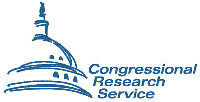United States Congress

Congressional Research Service Reports
Date of this Version
2009
Abstract
Congress established the Office of Science and Technology Policy (OSTP) through the National Science and Technology Policy, Organization, and Priorities Act of 1976 (P.L. 94-282). The act states that “The primary function of the OSTP Director is to provide, within the Executive Office of the President [EOP], advice on the scientific, engineering, and technological aspects of issues that require attention at the highest level of Government.” Further, “The Office shall serve as a source of scientific and technological analysis and judgment for the President with respect to major policies, plans, and programs of the Federal Government.” The OSTP Director also manages the National Science and Technology Council (NSTC), established by Executive Order 12881, which coordinates science and technology (S&T) policy across the federal government, and co-chairs the President’s Council of Advisors on Science and Technology (PCAST), a council of external advisors that provides advice to the President, established by Executive Order 13226. The OSTP Director also plays a role in the communication of scientific and technical information by federal agency scientists and engineers.
An issue for Congress is what should be the appropriate title, rank, role, and responsibilities of OSTP’s Director. Some in the science and technology community contend that by providing the OSTP Director with cabinet rank, that individual would have more influence within the EOP. Others have proposed that the OSTP Director play a greater role in ensuring federal agency scientists and engineers are able to communicate their findings, and in federal agency coordination, priority-setting, and budget allocation. Another question is who should decide the issue focus of OSTP Associate Directors, NSTC interagency coordination activities, and PCAST.
On December 20, 2008, President Obama stated his intention to appoint Dr. John Holdren as Assistant to the President for Science and Technology (APST), OSTP Director, and Co-Chair of PCAST. At the same time, he said that “promoting science isn’t just about providing resources— it’s about protecting free and open inquiry.” In his inauguration speech on January 20, 2009, President Obama stated, “We’ll restore science to its rightful place.” Since his inauguration, President Obama has issued executive orders, presidential directives, and executive memorandum regarding OSTP and APST position, including appointing the OSTP Director to the Domestic Policy Council, providing the OSTP director the ability to attend National Security Council meetings when science and technology related issues are on the agenda, and requiring the OSTP Director to develop recommendations for Presidential action designed to guarantee scientific integrity throughout the executive branch. In addition, he revoked Executive Order 13422 concerning regulatory planning and review (which some believe allowed OMB to conduct a political review of scientific documents).
During his Senate nomination hearing, Dr. Holdren discussed plans to appoint four Associate Directors. One Associate Director would focus on each of the following: science, technology, environment, and national security and international affairs. He also discussed his goal of reviving and utilizing the NSTC, and the potential role of the new Chief Technology Officer. On the issue of federal scientists and engineers ability to communicate their findings to the public, Dr. Holdren discussed his goal of clarifying policies in response to the America COMPETES Act. This would include disseminating research results; developing appeal processes; and providing training to managers, researchers and public information staffs on those policies. Dr. Holdren’s nomination as OSTP Director was confirmed by the Senate on March 19, 2009.


Comments
Published by Congressional Research Service, 7-5700, www.crs.gov, RL34736